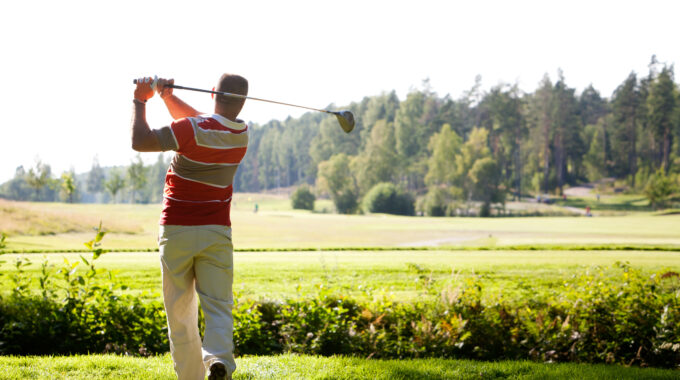Today’s technology has certainly increased the distance golf balls travel. But it has also improved…

How to Fix Your Golf Swing: Things to Keep in Mind
There are many theories on the golf swing. Swinging a golf club is not exactly a natural movement for the human body and there are as many different swings out there as golfers. Tom Lehman once said it doesn’t matter how you swing, it’s more important that it’s a repeatable swing. Repeating the swing is key because it can get out of whack. And when it does, we need to know how to fix our golf swing.
Where to Start?
The first step to fixing a broken swing is to diagnose what is not working. Plenty can be learned from paying attention to what happens to the ball after it is hit. Does it slice to the right (for a right-hander) or hook to the left? Did you top it and hit a worm burner or hit underneath it and shoot it straight up into the air?
Some teaching pros, such as Michael Turnbull, who is known as the Mindful Golf Pro (mindfulgolf.com), suggest that the diagnostic feedback comes from feeling the swing itself. He quotes legendary golfer Bobby Jones, who said he always felt as though he was swinging a ball on the end of a string. Turnbull had me swinging at a golf ball with my eyes closed to really feel the club in my hand and the swing I was making. (Interestingly enough, I was initially hitting the ball better than when I had my eyes open.
But regardless of your approach, the swing can swing out of kilter, so you must watch and feel what is going on with your swing.
What to Feel?
When you take your grip, is it a death grip? Are you so tensed up from the previous bad swing, that you are bound and determined to wring the life out of that shaft on the next one? Relax—intensity with a golf swing is the enemy of a smooth one, so take a breath and find your grip.
Trying too hard can throw your rhythm out of line so that your formerly Fred Couples-like smooth as butter swing turns into a motion like chopping wood with your driver. Tense muscles will doom a swing before it hits its apex.
How about your weight transfer? Experts say a good swing rotates around the pivot of your body. Power comes from weight transfer from front leg to back and back to the front leg again. Takes some practice swings and feel the rotation and then the weight transfer. The result that you want is good balance when holding the finish. If you are falling offline or tottering on one foot, your rhythm and balance need work, and once again, you could be swinging too hard. Above all, you should work until that balance feels natural.
What to Watch?
Now read what the ball is doing—where it is going. A topped ball could be alignment at address. Try putting the ball back in your stance so you are hitting the ball at the bottom of your swing. A sky ball could be the result of a ball teed too highly. That may not be the reason, but it is the first place to look because it is a much easier fix than changing your swing.
As far as slicing or hooking is concerned, it essentially comes down to not having your clubface square to the ball when making contact. A closed face at impact will hook the ball while an open one will cause a slice. Plenty of golfers (Mike Weir comes to mind) appear to check for this by taking a half practice swing after addressing and looking at the position of their clubface as it is taken back and then returns to the ball. It might look odd when seeing it on the PGA Tour, but it might just be the proper feedback you want when you envision your impending swing.
What Else?
If you want to get further into the diagnosis of your swing, there are plenty of places to find instruction and swing thoughts, and practice drills and quick fixes. But be warned, there is a lot of paralysis by over-analysis when it comes to the golf swing. A cluttered mind is where double bogeys live.
I’d say better to concentrate on the fundamental elements of the swing and remember that your broken swing was once very functional, so you may want to find your way back there. Why not take a few swings with your eyes closed and see what you feel going on in your swing. You will be amazed at the feedback you get. And with the proper diagnosis, fixing it becomes much easier.



